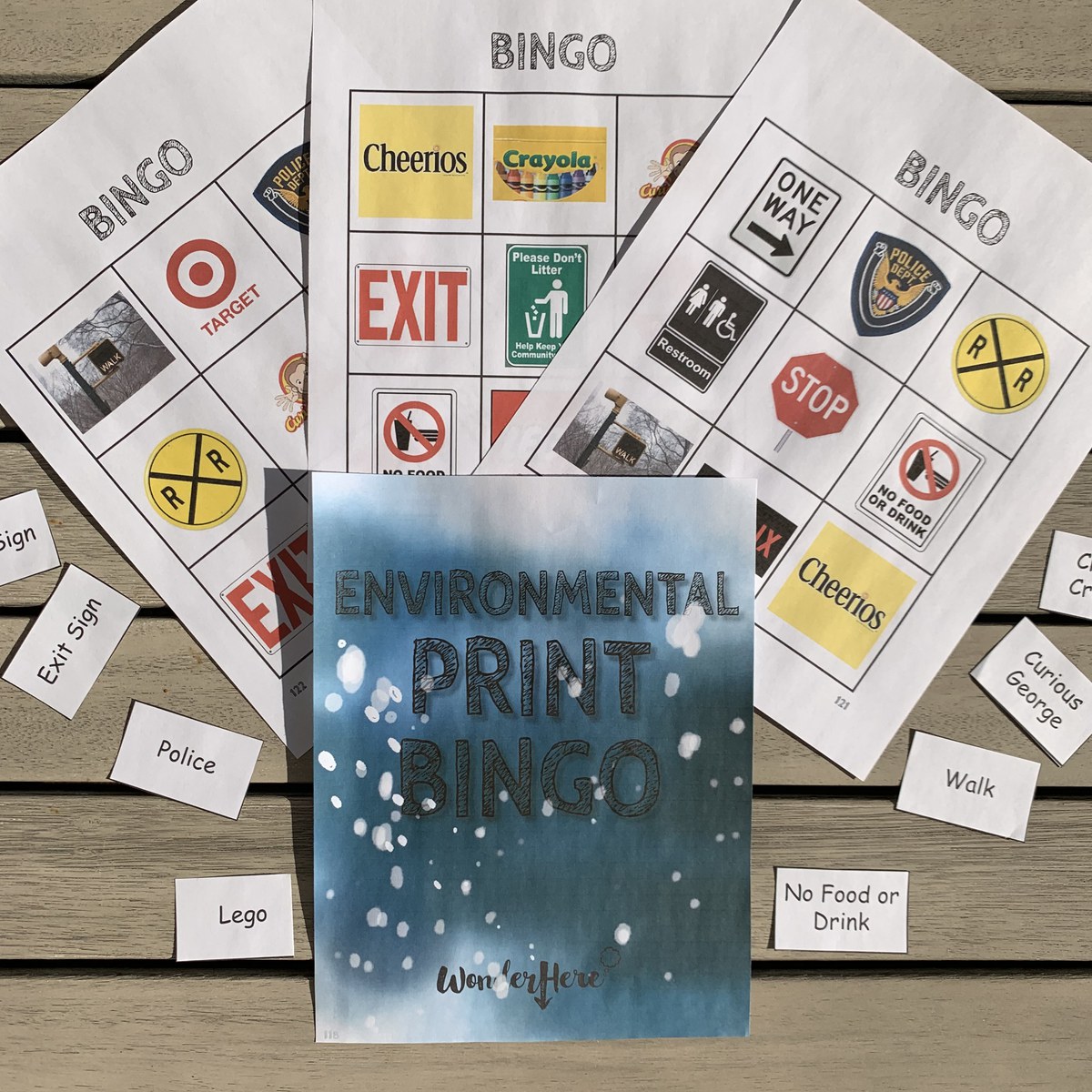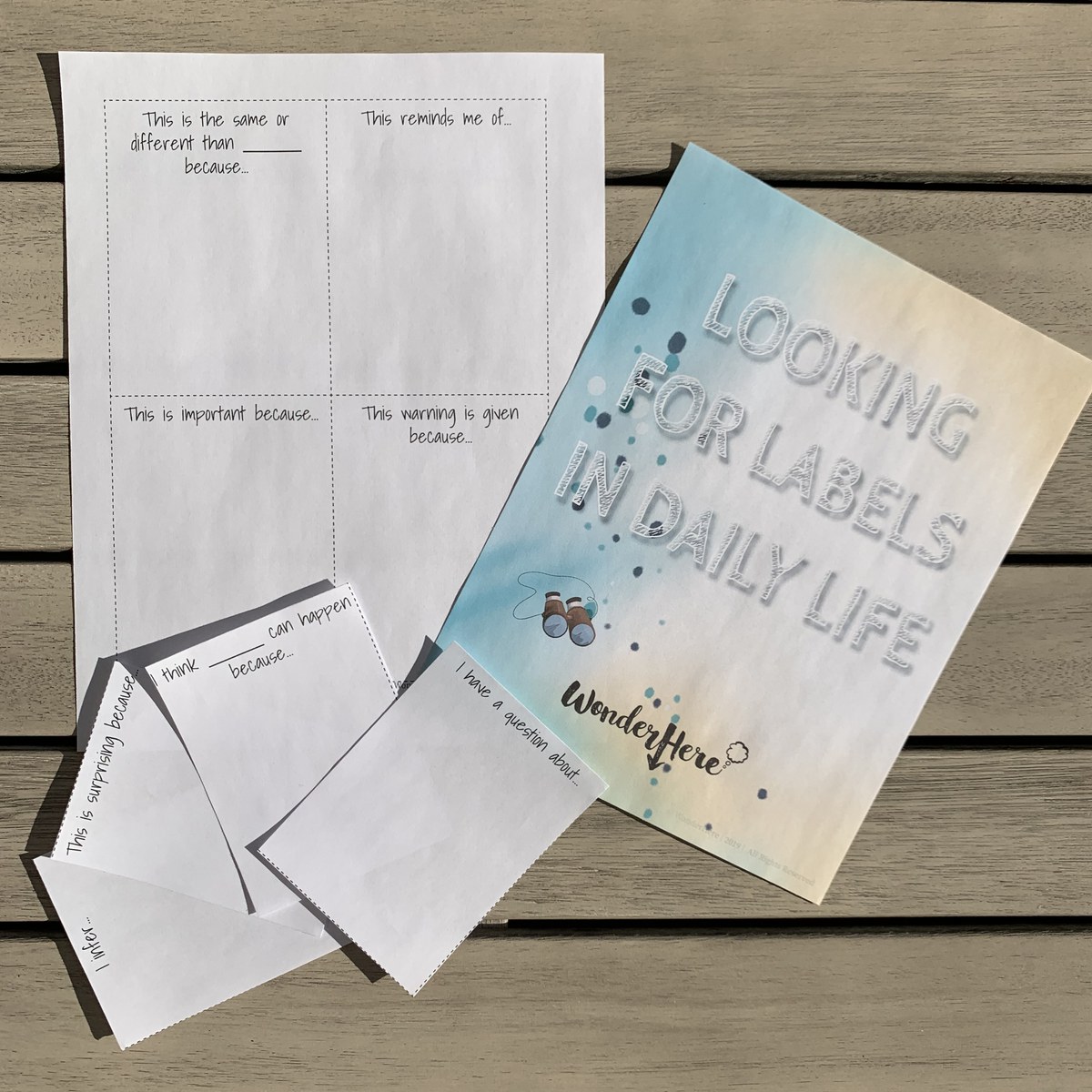If you’ve ever enrolled your child in a WonderHere class or program, have used our curriculum, or have simply heard us talk about our educational beliefs… then you know how passionate we are about fun, hands-on, relevant learning. We wholeheartedly believe that if you make learning enjoyable, and can connect learning to the real world, you can teach a child anything (and, chances are, they end up teaching themselves!).
For young children, that means gently introducing them to literacy in their surrounding environment. One of the ways we do that is by making them aware of environmental print. Environmental print is what we call the symbols all around us. You see it on signs, billboards, packages, everywhere! Take a drive around with your young child and ask them to read the signs they recognize… you may be surprised by how many they know! Everyday experiences with print are an important tool to help children connect what they already know about written language and what they are learning.
Drawing your young child’s attention to environmental print can increase their awareness of letters, words, and sounds, such as those in familiar logos and signs like the ones pictured in the attached cards! Environmental print is so helpful to show the connection of letters having meaning – you can bet the word McDonald’s means something very tangible to a child!
Our Environmental Print BINGO game is a fun twist on traditional BINGO where kids get to practice identifying familiar logos and signs! To prepare, cut out the BINGO cards and the Calling Cards (you can laminate them for durability if you’d like). The objective?… to be the first person to place three chips going down, across, or diagonal!
First, give each person a bingo card and chips. Then, place the calling cards in front of you, in a pile face down. Choose the top card and read it. Next, the child places the chip on the picture that matches on their own card (if they have it). When you have three chips in a row (going vertically, horizontally, or diagonally), call out, “BINGO!” and you are the winner.
Making your child aware of labels around your home or at a store is another great way to highlight environmental print in every day life. Labels are an essential part of daily life. They give information, warnings ingredients, instructions, etc.
In our Looking for Labels in Daily Life activity, you will use text markings to mark household labels. Here are the steps!
1. Print the 8 text marking boxes.
2. The boxes have the sentence stem for you. Add a symbol at the bottom corner of each box.
3. Go on a scavenger hunt around your home for different types of labels.
4. When you find one that matches a text marking box, complete the sentence stem and tape it to the label.
Optional: Don’t tell your family members until the end. Ask them to discuss the boxes with you as they find them around your home.
Here’s another fun and FREE idea for incorporating environmental print at home: make an alphabet book full of symbols you can collect! For example, your “M” page can have an M&M wrapper, and your “A” page you can cut out a piece of an Amazon package! Keep building your book as opportunities arise.
This can be a way for your new readers to gain confidence because the words will look familiar to them. Making simple sentences such as “I go to…” and then having a logo such as “Target” or “WAL-MART” there to complete the sentence is another way to practice, and your child will be motivated by their success! Helping kids connect reading to what they see in the real world is a huge step in the journey as a lifelong reader!



